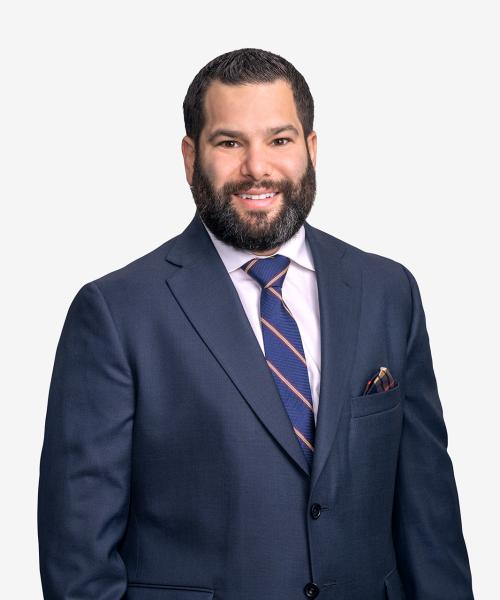Summarizing the Paycheck Protection Program
Description and Purpose of Paycheck Protection Program
Congress passed “The Coronavirus Aid, Relief, and Economic Security Act” (CARES Act), which included the “Paycheck Protection Program” (PPP) for small businesses. The PPP provides short-term cash flow assistance to small businesses and other eligible entities to help these businesses and their employees deal with the immediate economic impact of the COVID-19 pandemic. Loans are made by lenders certified by the Small Business Administration (SBA) and guaranteed by the federal government. The PPP will be administered by the SBA. The amount appropriated for PPP loans is $349,000,000,000.
Eligibility Period
PPP loans must be made during the period prior to June 30, 2020. Businesses should be prepared to apply quickly.
PPP Eligible Business
In addition to small business concerns under the Small Business Act, the PPP is available to business concerns (businesses organized for profit, with a place of business in the U.S., and which operates primarily in the U.S.), 501(c)(3) nonprofits, 501(c)(19) veteran’s organizations and tribal business concerns with 500 or fewer employees (full and part-time) or not more employees than the applicable size standard for their industry, as provided by the SBA, if higher. The SBA publishes the applicable size standard for each industry, broken down by North American Industry Classification System code, which can be found at the following website. Eligible entities under the PPP also include sole-proprietors, independent contractors, or other self-employed individuals, such as “gig economy” workers. The business must have been in operation on February 15, 2020, and must have paid employee salaries and payroll taxes or paid independent contractors, as reported on Form 1099-MISC.
The PPP is also available to franchises that are assigned a franchise identifier code by the SBA (click here for the chart) and businesses in the accommodation and food services sectors (i.e., businesses with a NAICS code beginning in 72). For all such businesses, SBA’s “affiliation” rules, which aggregate employees of affiliates as one entity, are waived. Entities are affiliates of each other when one controls or has the power to directly or indirectly control the other, or a third party controls or has the power to control both entities. For accommodation and food services businesses, the 500 employee limit is 500 employees per physical location, not for the entire corporate entity. For example, a restaurant chain that employs 1,700 employees over 10 locations would be eligible for loans at each location that has less than 500 employees, under the PPP. The affiliation rules are waived solely for the accommodation and food service industries and for franchises.
Use of PPP Loan Funds
Entities that receive loans under the PPP may use loan funds to pay the following expenses incurred during the period from February 15, 2020 through June 30, 2020: payroll costs (i.e., salaries, wages, vacation, parental, family, medical or sick leave, severance, retirement benefits, state or local taxes assessed on compensation), costs related to group health care benefits (i.e., insurance premiums), employee commissions and tips, interest on mortgage obligations, rent, including rent under a lease, utilities or interest on other debt, incurred prior to obtaining the loan (please note that such payments of interest are not forgivable under the PPP); provided, however, that PPP loan funds cannot be used to pay that portion of salaries, if any, over $100,000.
Payment Forgiveness
Principal amounts on PPP loans for the first 8-week period from when the loan is made will be forgiven if appropriate documentation is submitted to show that the funds were expended during this period for eligible uses. The amount of forgiveness is the sum of the following costs incurred and payments made during the 8-week forgiveness period: payroll costs (excluding that portion of any salaries over $100,000); interest on a “covered mortgage obligation”; “covered rent obligation[s]”; and “covered utility payment[s]”. The amount of a PPP loan that may be forgiven cannot exceed the principal amount of the loan. SBA is stating that due to likely high subscription, it is anticipated that not more than 25% of the forgiven amount may be for non-payroll costs.
The amount forgiven will be ratably reduced if average number of full-time employees during the 8-week forgiveness period is less than the average number of full-time employees during either of the following periods (the employer chooses which period to compare): February 15, 2019, through June 30, 2019; or January 1, 2020, to February 29, 2020. The amount of forgiveness will be reduced by the amount of reduction in salary of any employee earning under $100,000 per year, to the extent such reduction exceeds 25% of the employee’s salary during the most recent full quarter preceding the forgiveness period.
To encourage employers to rehire workers laid off due to the COVID-19 crisis, employers that rehire previously laid-off employees will not be penalized for having a reduced payroll at the beginning of the forgiveness period. Reductions in the number of full-time employees or in the salary or wages of one or more employees that occurs during the period from February 15, 2020, to April 26, 2020, will be disregarded if eliminated by June 30, 2020.
After the 8-week forgiveness period, business may apply for forgiveness by submitting: (i) documentation regarding the eligible uses of loan funds (federal payroll tax filings, state income, payroll, and unemployment insurance filings, canceled checks or other documents verifying payment of mortgage interest, utilities, etc.); (ii) a certification that such documents are true and correct, as well the amount to be forgiven, and (iii) any other documentation the SBA Administrator deems necessary. Thus, it will be important to keep good records evidencing the use of PPP loan proceeds. SBA is requiring that lenders must make a forgiveness determination within 60 days of submission.
The SBA will purchase loan forgiveness amounts from its certified lenders and this canceled indebtedness will not result in taxable income to the business.
Payment Deferral
After any loan forgiveness, small businesses may defer payment of remaining principal, interest, and fee balances for at least 6 months and not more than a year. SBA is stating that all payments will be deferred for six months. Interest will accrue during this period. Thus, businesses can get a substantial portion of their loan forgiven in the first 8 weeks following issuance, and not have to make any payments for six months.
PPP Loan Terms
PPP loans can be as large as 250% of a business’ average monthly payroll costs over the one year period before the loan is made, plus the amount of any COVID-19 Economic Injury Disaster Loan previously made to the business that is refinanced with the PPP loan, not to exceed $10 million; provided, that the portion of an employee’s salary above $100,000, if any, is not counted as payroll costs. PPP loans have a maximum interest rate of 4%. Note: SBA states that interest will be 0.5%. In addition, PPP loans only start to mature following the date an eligible business applies for loan forgiveness, as described in “Payment Forgiveness” above, and can have a maximum maturity of ten (10) years from such date. Note: SBA states that all loans will have a 2-year maturity.
No Security or Personal Guarantee; SBA Fee and Hardship Requirements Waived; Recourse to Owners for Misapplied Loan Proceeds
No collateral is required to be pledged and the normal personal guarantee requirement for SBA loans is waived. The SBA’s guaranty fee and annual servicing fee are also waived, as is the requirement that a business is not able to access credit elsewhere. So long as a business uses PPP loan proceeds for eligible purposes, as described in “Use of PPP Loan Funds” above, the loan is nonrecourse to the business’ shareholders, members, and partners.
How to obtain a PPP Loan
PPP loan will be made by any existing SBA lender or through any federally insured depository institution, federally insured credit union, and Farm Credit System institution that is participating. Other regulated lenders will be available to make these loans as soon as they are approved and enrolled in the program.
When Can Eligible Entities Apply for a PPP Loan?
PPP loan applications will become available on April 3, 2020, for small businesses and sole proprietorships, and on April 10, 2020, for independent contractors and self-employed individuals. The sample application can be found at the following website. The Treasury Department also released an information sheet for PPP borrowers, which can be found at the following website.
Regulations Expected Soon
The SBA is required to issue regulations within 15 days after the enactment of the CARES Act. The regulations will provide more specifics to both lenders and applicants. Once the SBA publishes regulations for the PPP application process, Arent Fox will provide additional analysis and guidance. Arent Fox has formed a Business Loan Task Force to counsel clients on the business loan programs included in the CARES Act.
Contacts
- Related Practices




